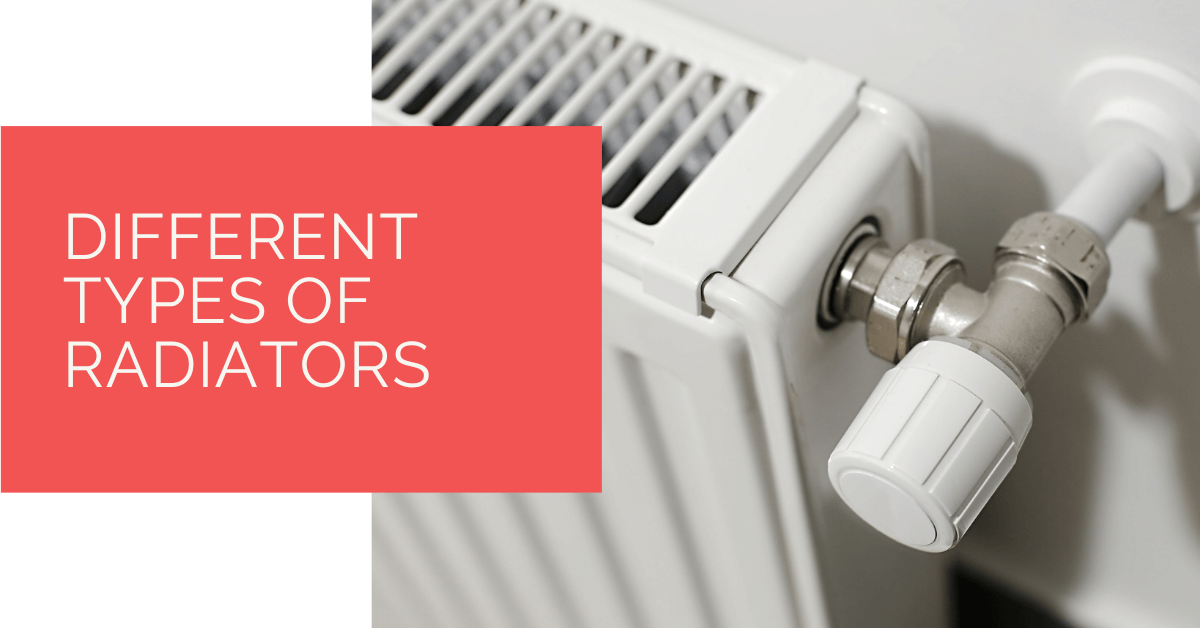Radiators have become an essential feature in almost every home, and rightly so. Who wouldn’t want a tool that can generate heat at their disposal?
However, some people need help determining which radiator best suits their needs because there are too many types, designs, and colours.
If that sounds like you, then you’re in the right place. This article will discuss the different types of radiators, from colours to designs, materials, and more.
Contents
Key Takeaways
- Different types of radiators are available, categorized by features such as fuel source, design, material, and colour.
- For fuel sources, options include central heating radiators, dual fuel radiators, and electric radiators, each with advantages.
- Radiator designs range from horizontal and vertical radiators to designer radiators, column radiators, single and double-panel radiators, and heated towel rails, catering to various aesthetic preferences and space constraints.
Radiator Types Based on Different Features
There are several types of radiators out there, and we’ll discuss them according to the following features:
- Fuel source
- Design
- Material
- Colour
Fuel Source
Your radiator’s fuel source is one of the first things you should consider. However, you should note that this is usually determined by the heating setup you have in your home. Still, you need to know the different available options.
Central Heating Radiators
These kinds of radiators are the most common ones in the UK. Central heating radiators generate heat through heated water from your boiler. This heated water then goes through pipes to get into the radiators and supply heat to your home.
Having a central heating system in your house means you have to turn on all radiators. This can be good or bad, depending on the situation.
For instance, these radiators will adequately keep you warm during the winter. On the flip side, if you only need to warm up a particular spot in your area, having the whole central heating system on is purely a waste.
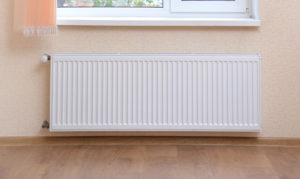
Dual Fuel Radiators
This radiator type is the best solution for those who wouldn’t want to turn on the entire central heating system just to generate heat for a particular area in their home. Dual fuel radiators operate with a central heating system but also come with an electrical heating element.
This implies that your radiator can function with a central heating system, but you can always use the electrical element if the standard heating system is off.
Usually, most homeowners will install a dual fuel radiator in specific areas of the house that needs warming up when the central heating isn’t turned on.
Electric Radiators
People without a central heating system usually have to use electric radiators. All they have to do with this radiator is plug it into their main electricity supply, and they can heat up the area.
These radiators are easy to install, so you might not need the help of a plumber to get this done. In addition, they don’t require as much maintenance as central heating radiators — they don’t have to be flushed or bled out.
Besides the fact that electric radiators are great for people without a central heating system, they’re also excellent for people with particularly cold areas in their homes. So, when your central heating isn’t on, you can always turn on the electric radiator — this helps to save energy.
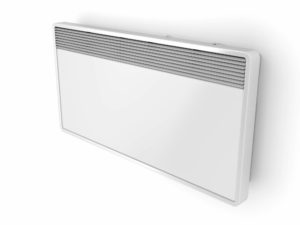
Design
Based on the design, here are the different types of radiators available and how they can fit into your home style.
Horizontal Radiators
Most homes in the UK use horizontal radiators because they can be placed in areas that aren’t often used. They can also fit into practically anywhere in the house. As the name implies, these radiators are wider than tall, and most homeowners install this kind under the window.
Vertical Radiators
If you don’t have enough horizontal wall space in your house for a radiator, then a vertical radiator is one that you should consider. It’s tall and doesn’t take up much space in a room, making it a perfect fit for a tight space.
However, unlike horizontal radiators, vertical ones are usually placed in prominent places. This makes them more decorative, adding more beauty to a living space. You can also find them in various stunning designs that match your home decor.
Designer Radiators
Even style should be considered when choosing radiators, which is what designer radiators are meant for. Coming in different styles and designs, you can always find a design that won’t just fade into the background like other appliances in the home but will add to the overall outlook of your house.
Some manufacturers produce mirror radiators, which are becoming quite popular. These radiators come with an inbuilt mirror. You can also find radiators in different stylish curves, which are a major upgrade from the regular boring radiator shape you can get anywhere.
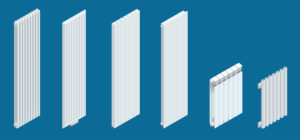
Column Radiators
If you’re into traditional aesthetics and design, a column radiator is the best option. It consists of rows of tubes connected at the top and bottom to make a single section.
This type of radiator can supply high levels of heat and can retain heat longer than most radiator designs. Even better, you can determine how much heat your column radiator can produce by choosing the number of columns it should have.
People are known to call this radiator the Victorian radiator, thanks to its traditional design. Still, it’s strong, durable, and will fit into any modern-styled home.
Single Panel Radiators
Single panel radiators are as basic as they come and are similar to hot water containers. Typically, the panels are mounted on the wall and face outwards. These radiators can also be divided into separate columns to cover more surface area, but they’re still single panels.
They’re slim, with a closer fit against the wall compared to double panel radiators.
Double Panel Radiators
As the name implies, the double panel radiator is made up of two single panels placed on each other and installed on the wall. The whole point of stacking these panels against one another is to generate more power. However, this can make the radiator stick out far from the wall, although this shouldn’t be too much of an issue.
Heated Towel Rails
Heated towel rails are the kind you find in bathrooms to supply heat to the space while keeping your towels dry and warm. These rails are available in different sizes and styles, so you can choose based on the size and style of your bathroom.
If you own a heated towel rail, it’s better to use dual fuel. This is because the central heating system can be expensive, especially when it’s only the heated towel rail you want to power.
With dual fuel, you can always use the heated rail alongside your central heating during the winter. However, you can also power the rail electrically when you only need to use the rail to dry your towels.

Material
Radiators are made with different materials, and these materials also determine how quickly they heat up and cool down. Here’s a breakdown of some materials that radiators can come in.
Cast Iron
Cast iron radiators are a far cry from modern-day insulators, and because of this, they can take longer to heat up and cool down. These radiators are still available, so if you’re looking for something traditional, you can find stainless steel designs of this material.
Stainless Steel
The best part about stainless steel radiators is that they don’t rust and will still supply heat for a while, even after turning off the heating system. However, they cost more than other kinds of radiators. That shouldn’t be an issue once you consider how effectively they heat your environment.
Mild Steel
Mild steel radiators are the most common radiators out there. This radiator is perfectly balanced in terms of heating up and cooling down — there are no extremities with this material. Mild steel radiators are also budget-friendly and come in different colours to spice up your living area.
Aluminium
Aluminium radiators are superconductors and will heat up almost immediately after you turn up your heating system. They’re also easy to install, so you don’t have to worry about expensive installation costs.
On the downside, aluminium radiators cool down as quickly as they heat up. This feature might be a hassle, especially if you turn off your heating system during the winter.
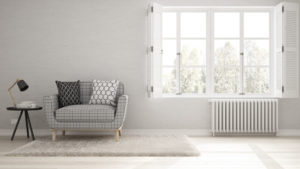
Colour
Radiators have evolved into something much more than a mere functional item to provide heat in the home. Now, homeowners are integrating radiators into their home decor, and manufacturers are producing more of these appliances in a variety of colours to meet up with their customers’ needs.
Here are some popular colours that radiators come in.
Chrome Radiators
Chrome radiators are what you can call the typical futuristic radiator. Once you enter a room with this radiator, it’ll probably be the first thing you’d notice because of its bold yet subtle industrial feel.
This radiator is especially common among minimalists who simply want to spice up their black-and-white living spaces. And even better, this kind of radiator is great for those interested in infusing luxury into their homes.
Finally, chrome radiators will sit well with other metallic accessories such as plug sockets, taps, light fittings and switches, and ovens in your house.
Anthracite Radiators
Anthracite isn’t a colour that easily comes to mind when discussing colour options. However, the more you look at it, the more you realise that an anthracite radiator is a must-have. This is particularly true for people with contemporary and modern tastes.
These radiators are charcoal in colour, as opposed to a pure black colour, and they contain hints of silver. This silver element makes the radiator shine in certain lights, which is a very attractive feature.
And as more people are adopting the contemporary taste, they’re dumping the white radiator in favour of the anthracite one.
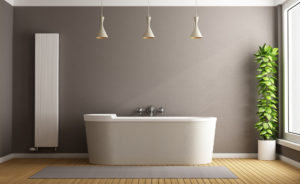
White Radiators
Traditions are hard to let go of, which is why many homeowners will still claim that the traditional white radiators are the best you can get. And there’s absolutely nothing wrong with that thought, as white radiators are as fashionable as other colour options on the market.
Another reason people would prefer this colour is that it goes with anything, so you don’t have to worry whenever you need to change something in your house — the white radiator will always match up.
And you can find it in different designs, from white vertical radiators to white column radiators and more. So, no matter your choice of design, there’s always a white radiator waiting for you.
Black Radiators
A black radiator is all you need if you don’t want to think too hard about what colour of radiator you should get. The best part is that black radiators will beautify any living area, regardless of home decor or design.
They’re stylish and sleek, making them perfect for any space, from the traditional farmhouse kitchen to the modern unclustered living rooms.
On top of that, being black, these radiators will conceal any dents or knocks, so you won’t even notice any disfiguration for a long time. Essentially, these black radiators take the crown in terms of durability.
Heat Pump Source: Reliable Heating and Cooling Solutions
At Heat Pump Source, we take pride in our unwavering commitment to serving the UK with top-tier HVAC solutions. From the efficiency of heat pumps and the cool relief of air conditioning to the warmth of boilers, radiators, and underfloor heating, our dedicated team is always at the forefront of innovation. We understand the unique needs of every household and business, and we strive to provide dependable health and cooling products and services that are tailored just for you. Ensuring your comfort and satisfaction is our utmost priority. Whether you have questions, need guidance, or require support, we’re always here to assist. Please don’t hesitate to contact us; we’re eager to be of service.
Conclusion
Now that you know the several types of radiators on the market, the ball is in your court to choose the best one for your needs. To make things easier, consider factors like the cost, the heating system in your home, and the ease of installation.
About the Author
At Heat Pump Source, our articles are the product of a collaborative effort among a team of highly skilled HVAC experts. Our dedicated professionals, hailing from diverse backgrounds in heating, ventilation, air conditioning, and refrigeration, contribute their extensive knowledge and experience to every piece of content. This multidisciplinary approach ensures comprehensive coverage. Our commitment is to deliver authoritative, reliable, and tailored advice to meet the unique needs of every household and business across the UK.

